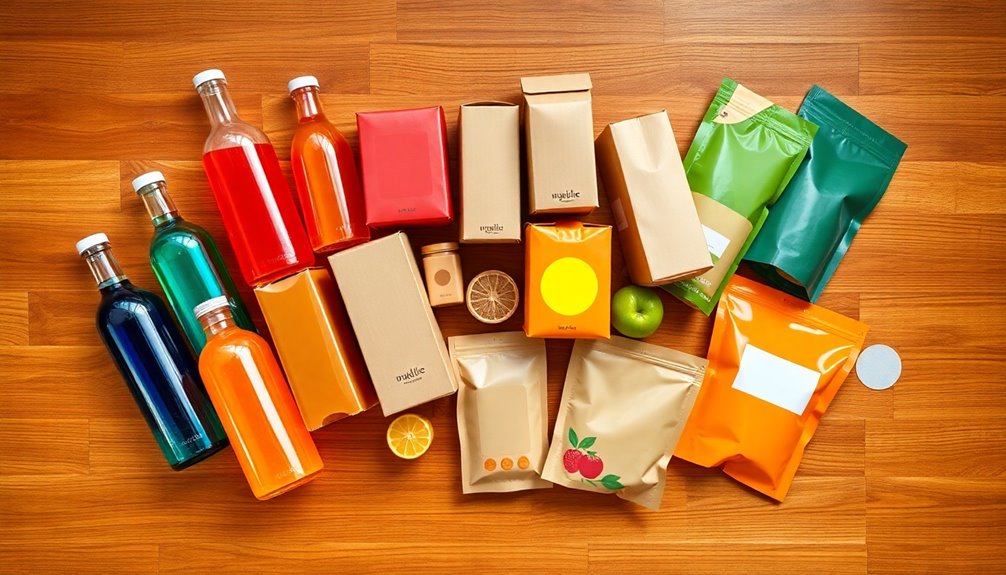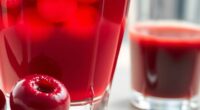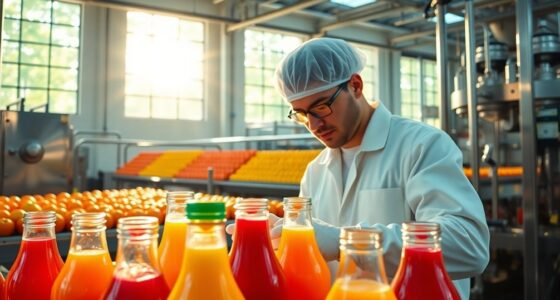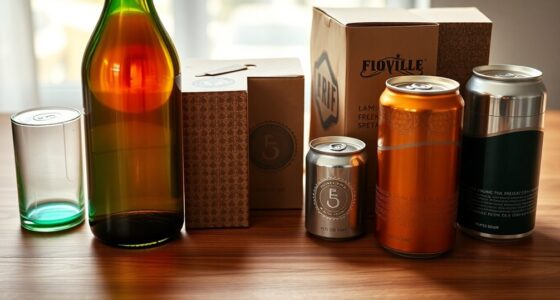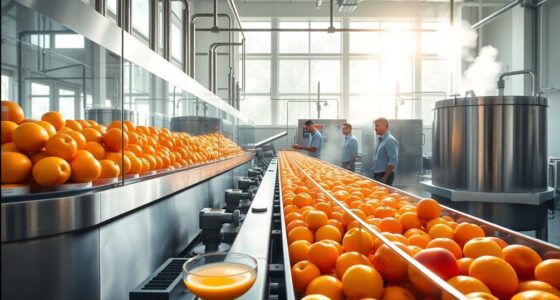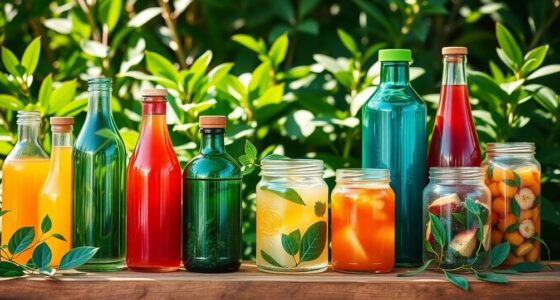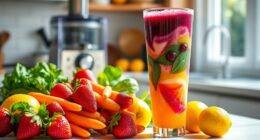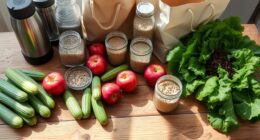When it comes to juice packaging, glass bottles, cartons, and PET bottles each offer unique advantages. Glass preserves aroma and flavor, while cartons boast excellent barrier properties for longer shelf life. PET bottles are lightweight and shatterproof, making them convenient for transport. Additionally, innovations like smart packaging and sustainable materials enhance the overall experience. Choosing the right packaging is key to ensuring freshness and sustainability, and there's more to explore about how each option can impact your beverage choice.
Key Takeaways
- Glass Bottles provide excellent aroma preservation and gas barriers, ensuring freshness and maintaining flavor without interaction with juice.
- Cartons are lightweight, shelf-stable, and utilize aseptic filling technology for extended shelf life without refrigeration.
- PET Bottles are shatterproof and visually appealing, though they have limited long-term oxygen barrier properties.
- Flexible Packaging, like stand-up pouches, offers convenience and sustainability, with innovations to preserve freshness effectively.
- Smart Packaging incorporates sensors for real-time product information, enhancing consumer engagement and freshness tracking.
Popular Types of Packaging for Juices and Beverages
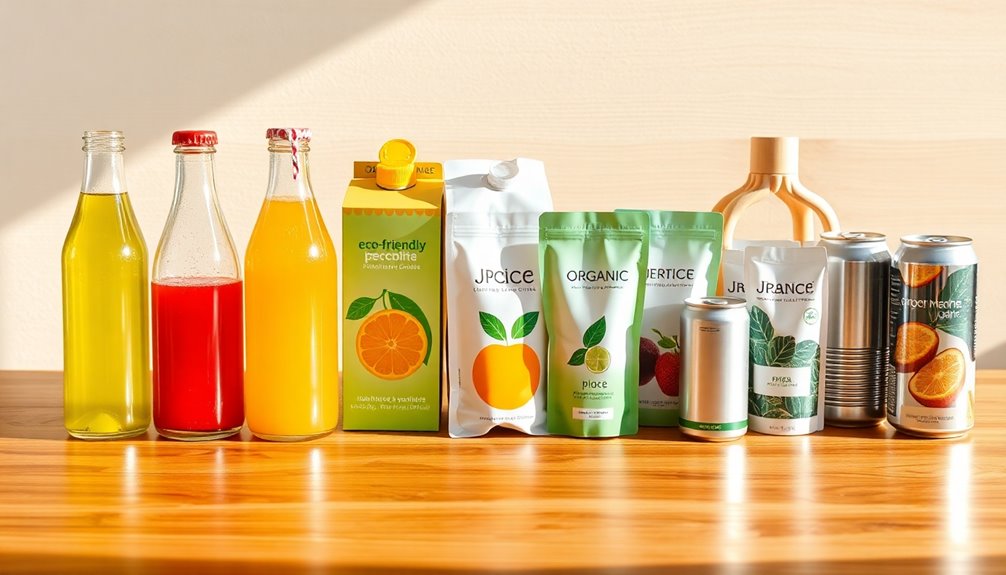
When you're choosing packaging for juices and beverages, what options stand out? Many juice manufacturers prefer glass bottles for their excellent aroma and gas barriers, which can extend shelf life beyond a year.
However, clear glass can let UV rays in, affecting quality. PET bottles offer a lightweight and unbreakable alternative, although they're not the best for oxygen-sensitive drinks and can impact visual appeal.
Laminated cardboard cartons dominate the market, providing a solid gas barrier and a one-year shelf life.
Flexible packaging solutions, like stand-up pouches, are increasingly popular for their eye-catching designs and reduced material use, aligning with sustainable packaging solutions.
Each option has its strengths, so it's crucial to evaluate your product's needs and target audience.
Glass Bottles
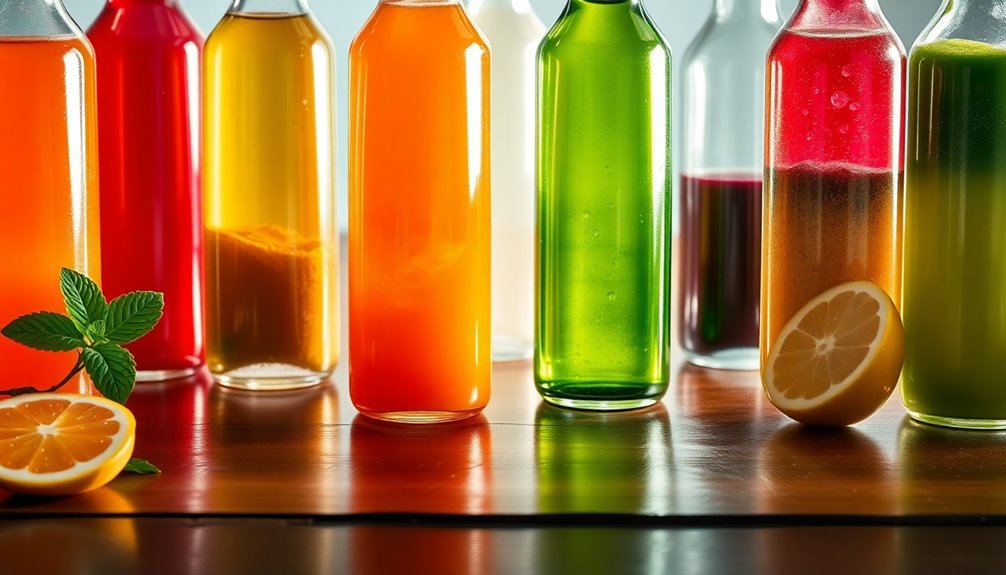
When you choose glass bottles for your juice, you're opting for superior aroma and gas barriers that keep your beverage fresh for over a year.
The hot-filling method not only eliminates pathogens but also preserves the juice's natural flavor.
With these advantages, glass bottles can greatly enhance your juice's shelf life and overall quality.
Aroma and Gas Barrier
Although many packaging materials exist, glass bottles stand out for their exceptional aroma and gas barriers.
These airtight hermetic seals prevent oxidation, ensuring your juice maintains its product quality and flavor over time. Unlike plastic, glass packaging doesn't allow significant gas permeation, which helps avoid off-flavors that can compromise sensitive beverages.
Because glass is inert, it won't interact with the juice, preserving its aroma throughout the shelf life. This means you can enjoy your favorite fruit beverages without worrying about spoilage or loss of freshness.
With a typical shelf life exceeding one year, glass bottles offer a superior solution for keeping your juice vibrant and delicious. Additionally, choosing glass aligns with the principles of maximizing freshness, ensuring that your juice remains at its peak quality for longer.
Choose glass for the ultimate protection of your beverage's integrity.
Shelf Life Advantages
Glass bottles offer significant shelf life advantages for your juice, ensuring it stays fresh and flavorful for over a year.
Their excellent aroma and gas barrier properties effectively prevent oxidation, keeping your beverage at its best. The hot-filling method used for glass packaging eliminates pathogens, further enhancing shelf life. Additionally, the materials used in glass packaging are fully recyclable, making them an environmentally friendly choice for consumers. By maintaining the proper temperature for beverage storage, you can further ensure the integrity of the drink, preserving both flavor and freshness for an extended period. This combination of effective packaging and proper storage conditions ultimately leads to a premium product experience.
Unlike plastic, glass is inert and won't react with your juice, preserving its quality over time. While clear glass can let UV rays in, colored glass options help mitigate this issue, boosting shelf stability.
Remember, proper sealing is essential; inadequate metal closure tightness can lead to oxygen ingress, compromising both the shelf life and quality of your juice.
With glass bottles, you'll enjoy peace of mind knowing your product remains first-rate. Additionally, glass packaging can help retain nutritional value by preventing exposure to elements that may degrade the juice's quality over time.
Cartons
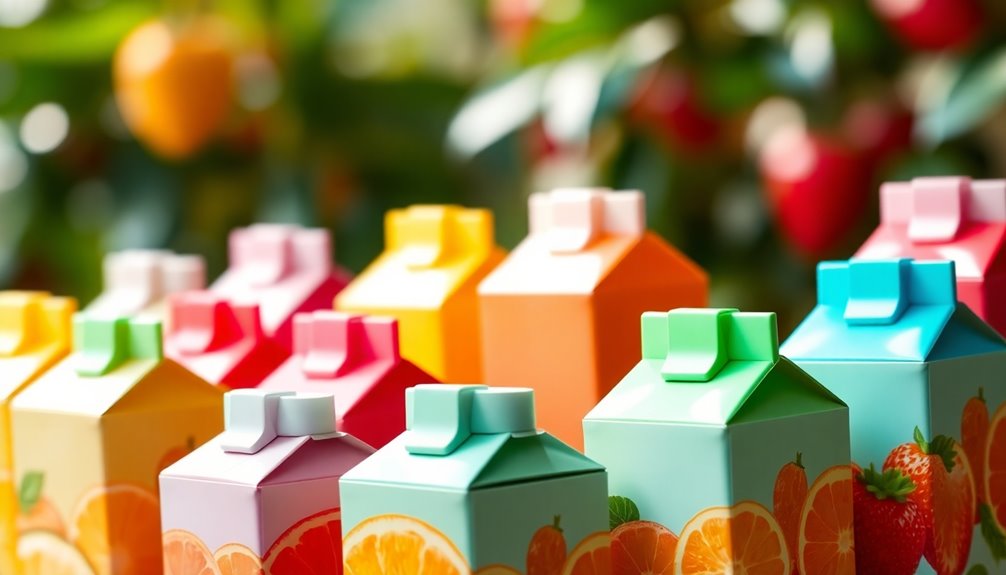
Laminated cardboard cartons stand out as the top choice for juice packaging due to their excellent barrier properties and shelf stability.
These cartons, produced by companies like Tetra Pak and SIG Combibloc, feature an aluminum film layer that blocks oxygen and light, preserving juice flavor and freshness for up to one year.
Thanks to aseptic filling technology, you can enjoy longer shelf life without refrigeration, making it convenient for on-the-go consumers.
Plus, laminated cardboard cartons are designed with easy-to-use pouring spouts and compact storage options.
Their eco-friendly packaging attributes, including recyclability and the use of renewable materials, align perfectly with growing consumer preferences. Additionally, these cartons can be enhanced with nutritional benefits that appeal to health-conscious consumers.
PET Bottles
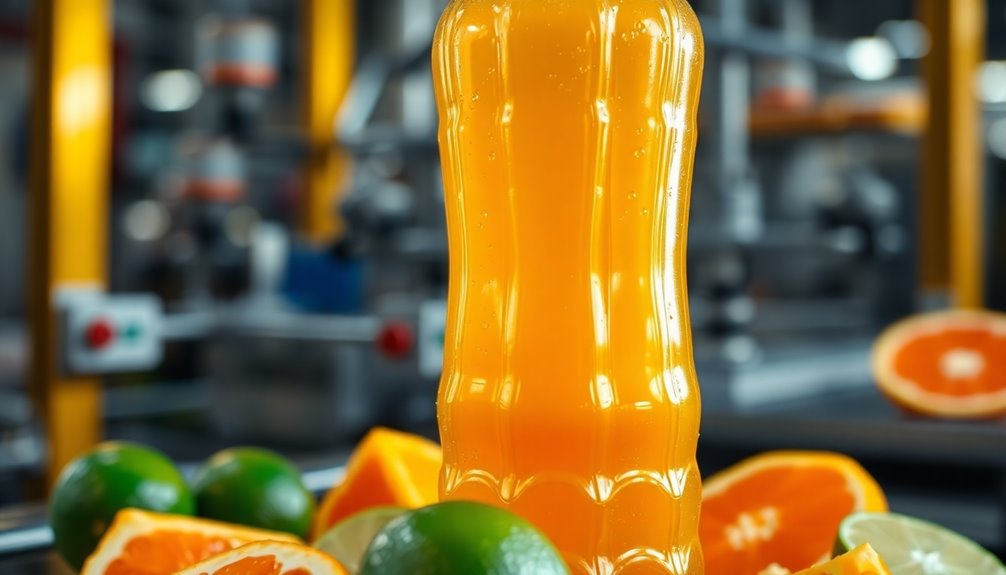
When considering juice packaging, PET bottles stand out for their lightweight and unbreakable design, making transport a breeze.
However, while they offer some protection against gas and aroma loss, they aren't the best option for long-term storage of sensitive juices. Additionally, juices like beet juice can benefit from packaging that preserves their nutritional quality and antioxidant properties for maximum health benefits.
Advantages of PET Bottles
While many packaging options exist, PET bottles stand out due to their numerous advantages.
These lightweight and shatterproof containers greatly reduce transportation costs and minimize damage during shipping.
PET plastic offers excellent aroma and gas barriers, making it suitable for juice bottles, ensuring they maintain product flavor without imparting any unpleasant plastic taste.
Additionally, the visual appeal of PET bottles attracts consumers, enhancing marketing efforts for your beverages.
With a high recycling rate, PET is considered a sustainable option, allowing for multiple recycling cycles without compromising quality.
Choosing PET bottles not only benefits your product's integrity but also aligns with environmentally friendly practices, making them an ideal choice for modern juice packaging. Moreover, fresh ingredients in juice recipes can greatly enhance the overall flavor and nutrition, making the packaging choice even more crucial for delivering high-quality beverages.
Limitations of PET Bottles
Although PET bottles offer many benefits, they do come with notable limitations that can impact their effectiveness for juice packaging. Consider the following issues:
- Long-term oxygen barrier properties: PET bottles have limited ability to prevent oxygen ingress, making them unsuitable for oxygen-sensitive beverages.
- Visual changes: Thin walls can lead to pronounced visual changes in liquids, negatively influencing consumer perception of quality.
- Health concerns: There's a risk of chemical leaching from PET bottles into the juice, raising potential contamination issues.
- Environmental concerns: Despite being recyclable, only about 9% of PET is actually recycled, considerably contributing to landfill waste.
These factors should be weighed against the advantages when choosing PET bottles for juice packaging.
Innovations and Technology in Juice Packaging
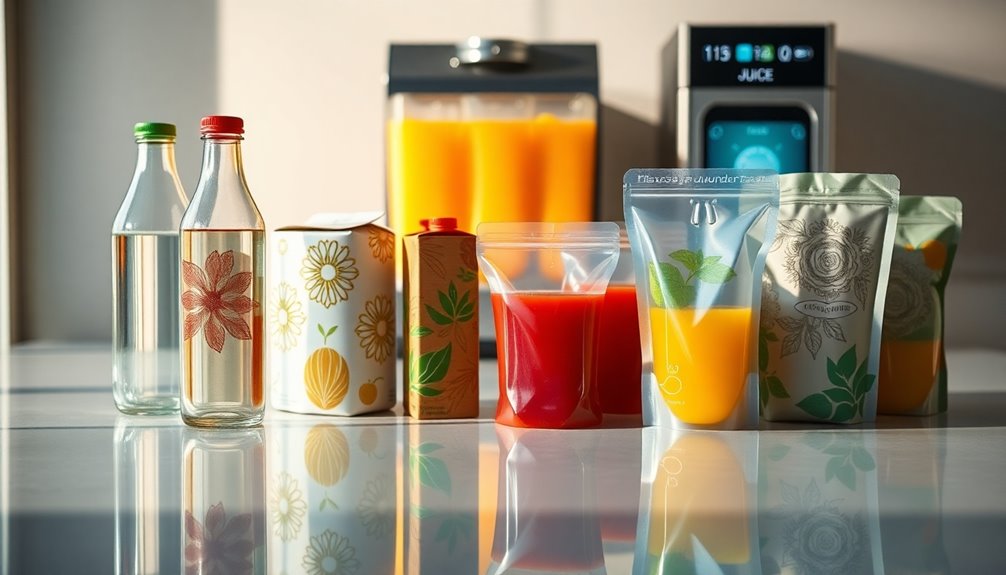
As the demand for fresh and high-quality juice continues to rise, innovations in packaging technology are playing an essential role in preserving flavor and extending shelf life. Aseptic technology guarantees juice safety and maintains its natural taste without refrigeration. Innovative packaging designs now utilize UV-blocking materials to shield against harmful light. Active packaging technologies enhance quality control through moisture and oxygen management, while smart packaging features with embedded sensors offer consumers personalized recommendations.
| Technology Type | Benefits | Key Features |
|---|---|---|
| Aseptic Technology | Long shelf life, no refrigeration | Flash-heating, quick cooling |
| UV-blocking Materials | Preserves freshness | Protection from harmful light |
| Active Packaging | Extends shelf life | Moisture and oxygen control |
| Smart Packaging Features | Enhances interactivity | Embedded sensors, AI integration |
| Biodegradable Materials | Eco-friendly options | Recyclable and sustainable |
Sustainability and Environmental Commitment
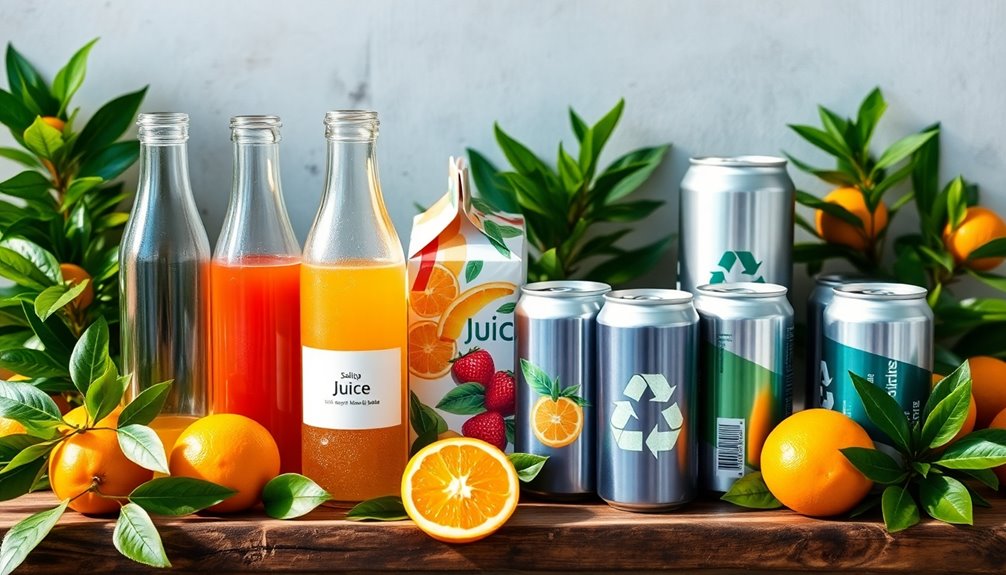
Innovations in juice packaging have paved the way for a greater focus on sustainability and environmental commitment.
As you choose juice products, consider the impact of sustainable packaging materials on our planet. Here are some key elements to look for:
- Biodegradable Options: These materials break down naturally, reducing landfill waste.
- Recyclable Plastics: While PET is lightweight, only 9% is currently recycled; seek brands committed to improvement.
- Glass Bottles: 100% recyclable and crafted from natural materials, they help lower carbon emissions.
- Eco-Friendly Designs: These not only attract conscious consumers but also embody a vision for a greener future.
Consumer Experience and Brand Differentiation
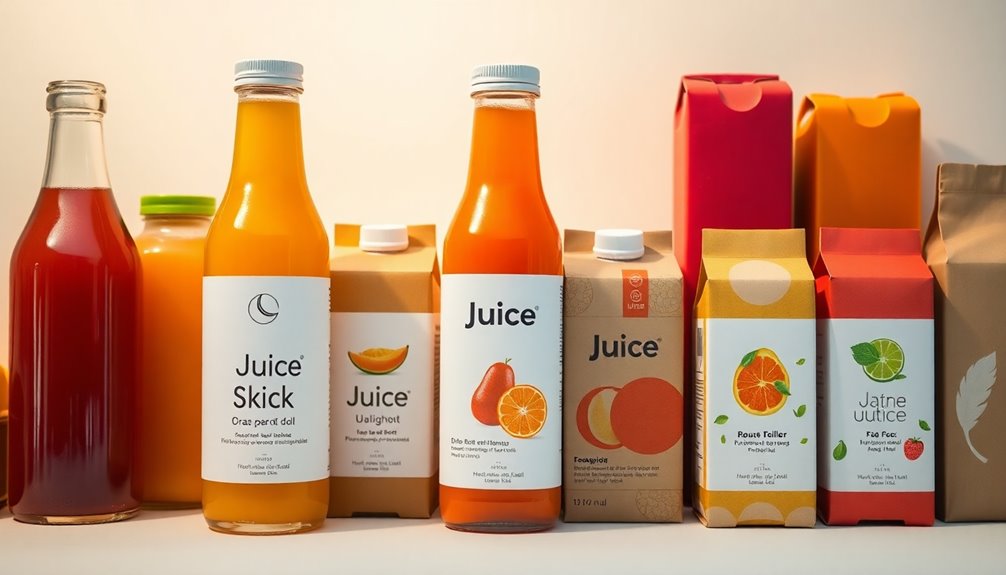
When you grab a juice off the shelf, the packaging often speaks volumes about the brand's identity and promises. Effective packaging designs serve as a narrative tool, communicating freshness and brand ethos.
Vibrant colors and engaging textures create a sensory experience that draws you in, enhancing your consumer experience. Well-designed juice bottles act as silent ambassadors, elevating the perceived quality and fostering positive associations.
Convenience features, like easy-to-use twist caps and single-serve options, further boost your satisfaction by offering a seamless drinking experience.
In a crowded market, unique and eye-catching packaging can set a brand apart, ensuring it's memorable and likely to be recommended.
Ultimately, smart packaging plays a vital role in brand differentiation and consumer loyalty.
Community Engagement and Local Connection
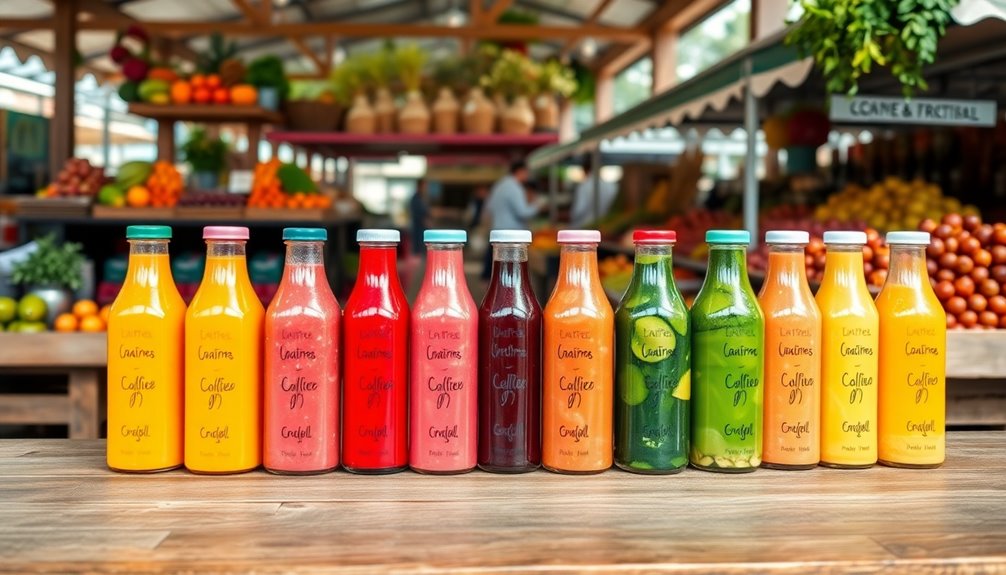
Juice packaging that reflects community spirit can create powerful connections between consumers and their local culture. When you choose community-themed juices, you're not just buying a drink; you're supporting your neighborhood and its traditions.
Here's how effective packaging design enhances local connection:
- Intricate Designs: Celebrate local traditions, boosting consumer connection and pride.
- Limited Editions: Showcase local creativity, transforming bottles into cultural canvases.
- Support Local Initiatives: Foster responsibility and strengthen ties to your community.
- Memorable Experiences: Create social touchpoints that link each sip to shared narratives.
Engaging with local artists in packaging design not only enhances brand loyalty but also resonates with your values, making you feel more connected to your community.
Frequently Asked Questions
Which Packaging Material Is Best Suited for Juice?
When you're choosing the best packaging material for juice, consider factors like shelf life, weight, and environmental impact.
Glass bottles keep juice fresh and flavorful but can break easily.
PET bottles are lightweight and shatterproof, though they aren't great for long-term storage.
Cartons offer good gas barriers and a decent shelf life.
Flexible packaging is trendy and eco-friendly but may not protect juice as well.
Ultimately, it depends on your priorities!
What Materials Are Used to Make a Juice Box?
When you grab a juice box, you're holding a clever combination of materials.
Juice boxes are primarily made from laminated cardboard, which includes layers of paperboard, polyethylene, and aluminum. The polyethylene inner layer prevents moisture from reaching the cardboard, while aluminum enhances the gas barrier, keeping your juice fresh.
This construction not only extends shelf life but also makes them lightweight and easy to carry, perfect for enjoying on the go.
What Is the Most Ideal Packaging Material?
Choosing the right packaging material is like picking the perfect outfit for a big event; it needs to impress while serving a purpose.
You'll find glass bottles are often seen as the best option, boasting recyclability and excellent shelf life. However, PET bottles offer lightweight durability, while laminated cartons provide a good balance of protection and sustainability.
Ultimately, consider your priorities—quality, convenience, or environmental impact—when deciding on the ideal packaging.
What Is the Primary Packaging for Juice?
When it comes to primary packaging for juice, you've got a few solid options.
You can choose glass bottles for their excellent aroma protection and long shelf life, or go with laminated cardboard cartons that keep juices stable without refrigeration.
PET bottles are another choice; they're lightweight and visually appealing but may not be the best for oxygen-sensitive drinks.
Ultimately, the right packaging depends on your product's needs and your target market's preferences.
Conclusion
In the world of juice packaging, each material is like a brushstroke on a canvas, shaping your brand's masterpiece. Glass bottles reflect purity, while cartons symbolize sustainability and convenience. PET bottles stand as a demonstration of innovation. By choosing the right packaging, you're not just holding juice; you're crafting an experience that resonates with consumers. Embrace these choices, and watch your brand blossom like a vibrant orchard, connecting with your community and standing out in a crowded market.
Cindy thoroughly researches juicing trends, techniques, and recipes to provide readers with practical advice and inspiration. Her writing style is accessible, engaging, and designed to make complex concepts easy to understand. Cindy’s dedication to promoting the advantages of juicing shines through her work, empowering readers to make positive changes in their lives through the simple act of juicing.

